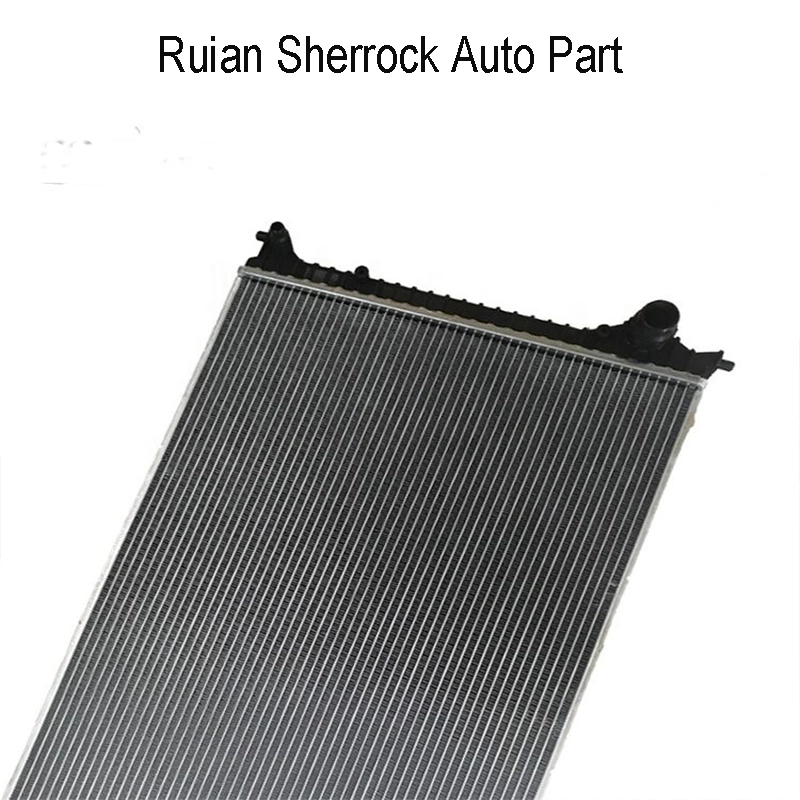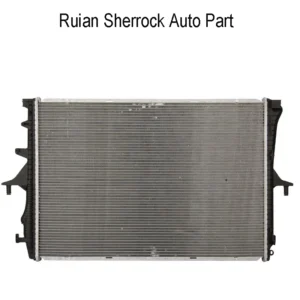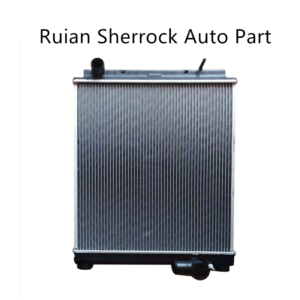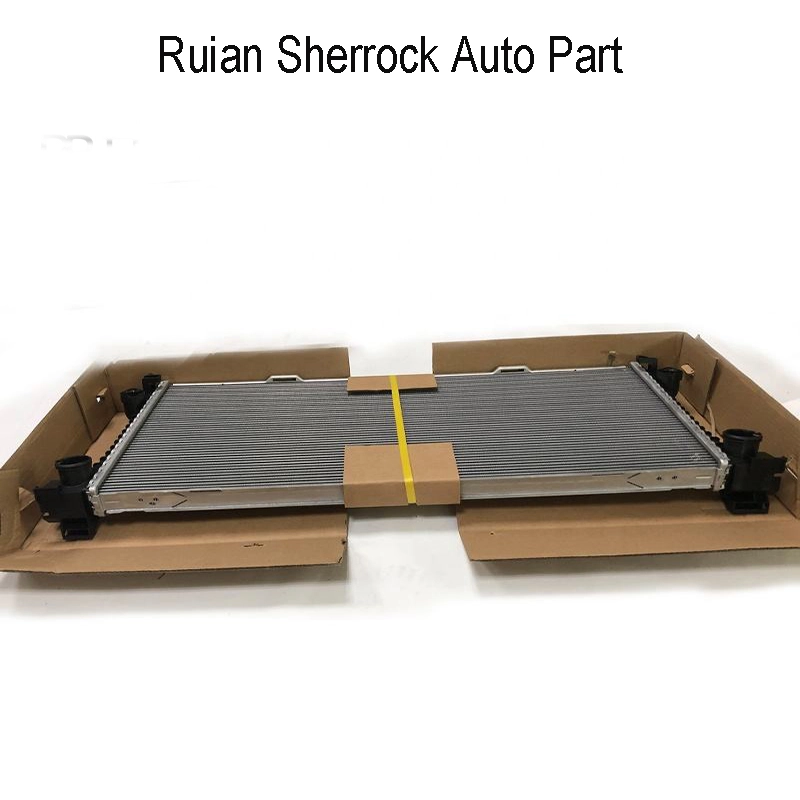Car cooling system radiator honda suitable for 2010 Civic DX L4 1.8L OEM 19010-RNA-G51
Car cooling auto radiator
Product name: Car cooling system radiator honda for 2010 Civic DX L4 1.8L OEM 19010-RNA-G51
This radiator honda fit for 2010 Civic DX L4 1.8L OEM 19010-RNA-G51.Our part number is 001SR002.The material of this radiator is plastic tank and aluminum core.The core size of radiator is 375x680x16mm.The tank size is 699x48mm.The inlet diamater of radiator is 32mm.The outlet diamater of radiator is 32mm.Other referrence number is 8MK376745654, 105159, PL442800, AUDI5395,.The suitable oil cooler 345mm.
Product Details
Product name: Car cooling system radiator honda for 2010 Civic DX L4 1.8L OEM 19010-RNA-G51
Part Number: 001SR002
Model: 2010 Honda Civic DX L4 1.8L
Transmission of engine: MT
Core size: 375x680x16mm
Tank size: 699x48mm
Oil cooler: 345mm
Inlet Diameter: 32mm
Oulet Diameter: 32mm
OEM: 19010-RMN-W51
Reference NO.:8MK376745654, 105159, PL442800, AUDI5395,
Material:Plastic tanks/Aluminum core
Package And Shipping
Package:Each pieces will put into one inner carton,5pcs will put into master carton.

Shipping:All radiators will be finished within 45days after receive deposit.


Production Process
Production Process
Mechnical Workshop Picture
1.Fin radiator production,tube radiator production and water tank production
2.Assemble the radiator core
3.Cleaning the radiator core
4.Testing if radiator leak
5.Mounting the radiator tank
6.Testing the leak of the radiator core
7.Package




Brazed Work Shop
1.Fin radiator production,tube radiator production
2.Assemble the radiator core
3.Manul assemble tank
4.Bake radiator
5.Test radiator core if leak
6.Package




FAQ
WHAT IS VEHICLE RADIATOR?
Vehicle radiator, it is also called automotive radiator or car radiator, is mostly installed in front of the vehicle engine and fan.Radiator belongs to the automobile cooling system. To avoid overheating of the engine, the surrounding components (cylinder liner, cylinder head, valve, etc.) must be properly cooled. In order to ensure the cooling effect, the automobile cooling system is generally composed of radiator, thermostat, water pump, cylinder water channel, cylinder head water channel, fan, etc. The radiator is responsible for the cooling of circulating water. Its water pipes and fins are mostly made of aluminum. The aluminum water pipes are made into a flat shape. The fins are corrugated. The heat dissipation performance is emphasized. The installation direction is perpendicular to the direction of air flow.Coolant flows inside the radiator core, and air passes outside the radiator core. The hot coolant is cooled by radiating heat to the air, and the cold air is heated by absorbing the heat dissipated by the coolant.It is an important part of water-cooled engine and also a heat exchanger.
HOW DOES A VEHICLE RADIATOR WORK IN A CAR?
In general, the engine uses the heat generated by the combustion of the internal combustion engine to operate. However, the effective power is only about 40% of the thermal energy, and the remaining thermal energy is lost as mechanical friction heat. In particular, in order to maintain the proper temperature of the cylinder, cylinder head, and intake and exhaust valves, it is necessary to cool various parts of the internal combustion engine, so that heat energy is also lost as a coolant loss. Vehicle radiators work by using the heat loss of the coolant. In order to ensure the proper temperature of the internal combustion engine, the loss of heat from the cooling water is indispensable.
Engine cooling is mainly carried out by repeated operations such as water pumps and electric fans. Water pump speed up the flow of coolant which around the water jacket of cylinder.The natural wind and the electric fan are used to cool the coolant in the car radiator. The cooled coolant It is introduced into the water jacket again, and it goes round and round to realize the cooling of the vehicle engine.
The radiator need to have sufficient air circulation area and heat dissipation area. There is enough air circulation area to allow air to circulate through the radiator and take away the heat from the radiator. There is enough heat dissipation area to realize the heat exchange between the coolant and the heat sink.
WHAT IS THE FUNCTION OF VEHICLE RADIATOR?
The function of the vehicle radiator is to protect the vehicle from damage and keep the engine in an appropriate temperature range.
WHAT CONSTITUTES A VEHICLE RADIATOR?
The vehicle radiator consists of three parts: radiator inlet water tank, radiator outlet water tank and radiator core.
ACCORDING TO THE PURPOSE OF THE VEHICLE,WHAT TYPES OF VEHICLE RADIATORS ARE THERE?
According to the purpose of the vehicle, vehicle radiators can be divided into passenger automotive radiators and commercial vehicle radiators. Passenger automobile radiators are used in passenger cars, such as: cars and cars with less than 9 seats, including SUVs, MPVs, racing cars and household pickups. Commercial vehicle radiators are used in commercial vehicles, such as: all trucks, special vehicles, military vehicles, engineering vehicles, all passenger vehicles with more than 9 seats, tractors, agricultural vehicles, mining vehicles, etc.
ACCORDING TO THE MATERIAL,WHAT TYPES OF VEHICLE RADIATORS ARE THERE?
According to materials,vehicle radiators can be divided into aluminum radiator and copper radiator.The former is used for general passenger cars and the latter is used for large commercial vehicles. Vehicle radiator materials and manufacturing technology have developed rapidly. With its obvious advantages in lightweight materials, aluminum car radiators have gradually replaced copper automotive radiators in the fields of cars and light vehicles. At the same time, copper automobile radiator manufacturing technology and technology have made great progress. Copper brazing radiators It has obvious advantages in terms of engine radiators for passenger cars, construction machinery, and heavy trucks. The radiators for foreign cars are mostly aluminum car radiators, mainly from the perspective of environmental protection (especially in European and American countries). Among the new European cars, aluminum car radiators account for an average of 64%. From the perspective of the development of my country’s vehicle radiator production, the number of aluminum car radiators produced by brazing has gradually increased. Brazing copper vehicle radiators are also used in buses, trucks and other engineering equipment.
ACCORDING TO DIRECTION OF THE COOLANT FLOW IN THE VEHICLE RADIATOR,WHAT TYPES OF VEHICLE RADIATORS ARE THERE?
If classified according to the direction of the coolant flow in the vehicle radiator, the vehicle radiator can be divided into two types: longitudinal flow and cross flow. For longitudinal flow vehicle radiators, the vehicle radiator core is arranged vertically, connected to the radiator inlet water tank on the upper side and the radiator outlet water tank on the lower side. When working, the coolant flows from the water inlet chamber through the vehicle radiator from top to bottom and enters. Inside the water outlet. For a cross-flow type of vehicle radiator, the cooling fluid in the left and right sides of the radiator water tank respectively flows through the vehicle radiator.
Most cars use cross-flow vehicle radiators. This is mainly because the car’s body is usually low and the space is relatively tight. The use of cross-flow vehicle radiators is beneficial to reduce the height of the hood. Cross-flow water structure cars The radiator can make full use of the limited space of the car to maximize the windward area of the vehicle radiator, which is beneficial to improve the aerodynamics of the front end of the car body. For trucks, the longitudinal flow structure is usually adopted. This is because the longitudinal flow vehicle radiator has better heat dissipation strength and suspension reliability, but the requirements for space, especially height, are more distant, and This is not a big problem for trucks.
ACCORDING TO THE CORE STRUCTURE OF VEHICLE RADIATORS.WHAT TYPES OF VEHICLE RADIATORS ARE THERE?
According To The Core Structure Of vehicle Radiators,it has mechanical vehicle radiator and brazed vehicle radiator.
Mechanical vehicle radiator is also called tube-fin type vehicle radiator.Mechanical vehicle radiator include many cooling tubes and fins.Most of the cooling tubes are oblate cross-sections.It could reduce air resistance and increase the heat transfer area.
Brazed vehicle radiator is also called tube-band type.Brazed vehicle radiator include corrugated heat dissipation belt and cooling tube.In vehicle radiator,it has a louver-like holes on the heat dissipation belt.It could help to Improve heat dissipation capacity.
Compared mechanical vehicle radiator,the heat dissipation function of brazed vehicle radiator is much higher than mechanical vehicle radiator.Generally,the price of brazed vehicle radiator is also higher than mechanical vehicle radiator.
Why Choose Us
Why Choose Us
1.Our production capacity is 20000pcs per month.So our production time is very quickly.
2.Each radiator will test after produced.So we could prove quality of the radiator.
3.We have been in this line over 10 years.Long experience help us to make good quality radiator.
4.Our radiator have competitive price
5.Our company have over 2000 type of radiators for you choose.
6.As some items,we have stock.So we could offer lower quantity for customers.











